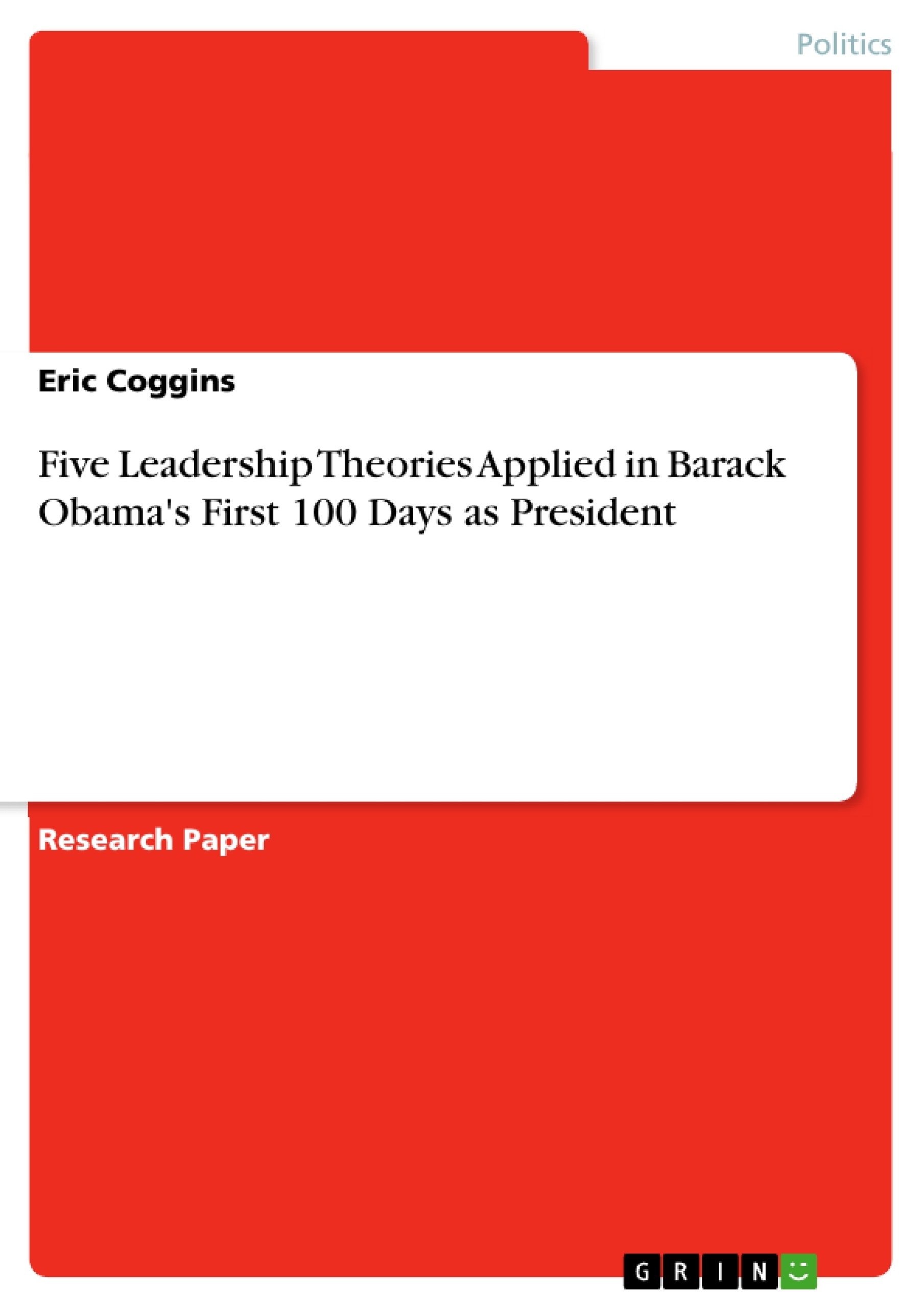In his acceptance speech delivered in Chicago’s Grant Park, newly chosen President-elect Barack Hussein Obama threw down the gauntlet and declared, “A new dawn of American leadership is at hand” (DeFrank, 2008). Indeed, the unprecedented election of Barack Obama as the 44th President of the United States of America was met with historically high expectations (Ruggeri, 2009). In his first 100 days in office, Obama attempted to fulfill those expectations. Ghattas (2009) wrote: “The breadth of issues he has tackled in this short time is unprecedented, prompting former Secretary of State Henry Kissinger to write recently in the Washington Post that ‘the possibility of comprehensive solutions is unprecedented’. There is no guarantee that any of it will lead to success over the next four years, but the new administration is aiming high.” As the new president engaged a large breadth of issues, he had to exercise a broad range of leadership theories and exercises. This paper examines five of leadership models he demonstrated in his first 100 years in office.
Table of Contents
- Five Leadership Theories Applied in Barack Obama's First 100 Days as President
- President Barack Obama and Transformational/Charismatic Leadership
- President Obama and Contingency Leadership Theory
Objectives and Key Themes
This paper examines the leadership styles employed by President Barack Obama during his first 100 days in office. It analyzes how five specific leadership theories were manifested in his actions and decisions, highlighting the adaptability and effectiveness of his approach.
- Transformational/Charismatic Leadership
- Contingency Leadership
- Leader-Member Exchange Theory
- Team Leadership Theory
- Cross-cultural Leadership Theory
Chapter Summaries
The first chapter provides an introduction to the concept of leadership styles and sets the stage for the analysis of President Obama's leadership during his first 100 days in office. The chapter highlights the significance of Obama's election as the 44th president of the United States and the high expectations placed upon him. It further discusses the range of issues he faced and the leadership theories he applied in addressing them.
The second chapter delves into the transformational/charismatic leadership theory, focusing on its core tenets and how it was manifested in President Obama's actions. The chapter discusses key characteristics of transformational leadership and how Obama exhibited these characteristics in his communication with the American people and his engagement with various audiences.
The third chapter explores the concept of contingency leadership theory. The chapter highlights how President Obama demonstrated the ability to adjust his leadership style to suit different situations, showcasing his adeptness in meeting the demands of each context.
Keywords
The main keywords of this paper are: leadership theories, Barack Obama, first 100 days, transformational leadership, charismatic leadership, contingency leadership, leader-member exchange theory, team leadership theory, cross-cultural leadership theory.
- Quote paper
- Eric Coggins (Author), 2009, Five Leadership Theories Applied in Barack Obama's First 100 Days as President, Munich, GRIN Verlag, https://www.grin.com/document/130531




